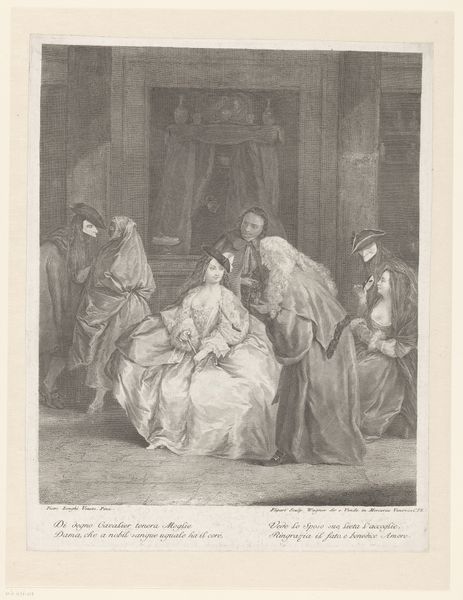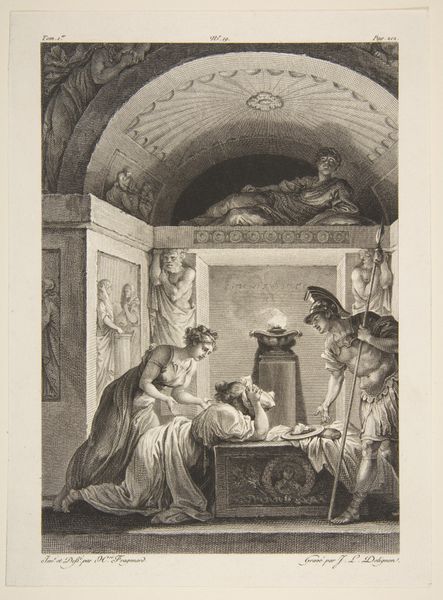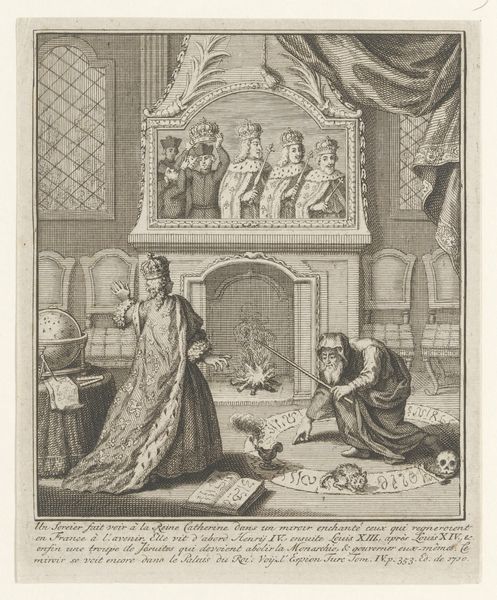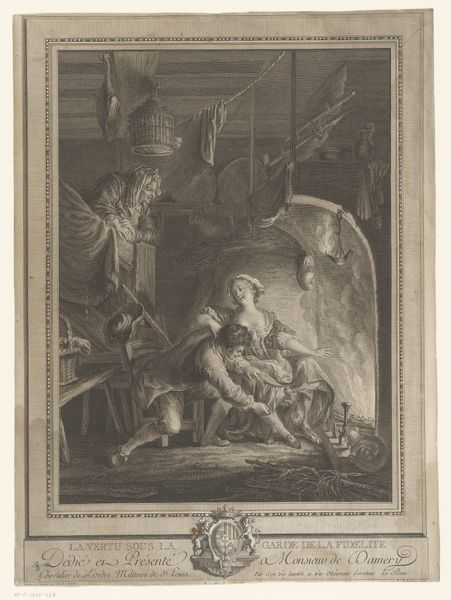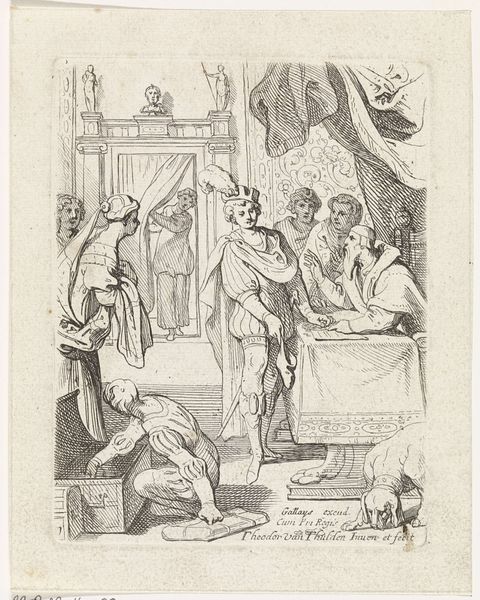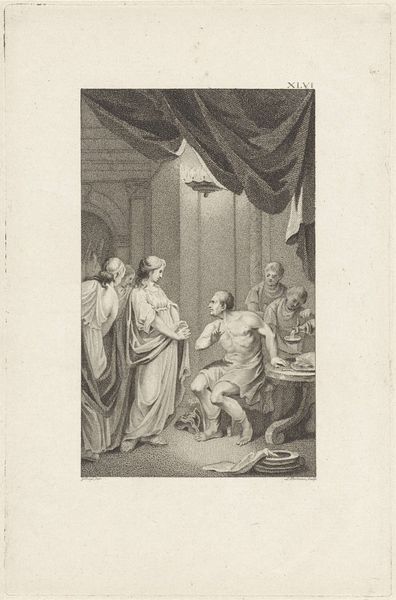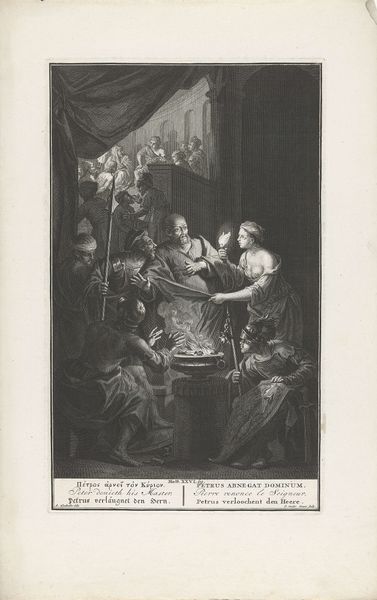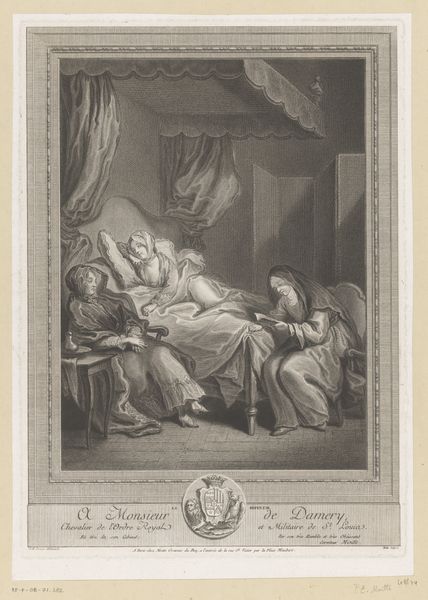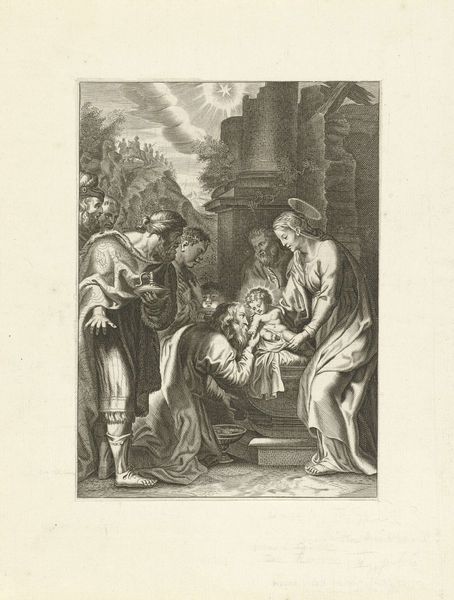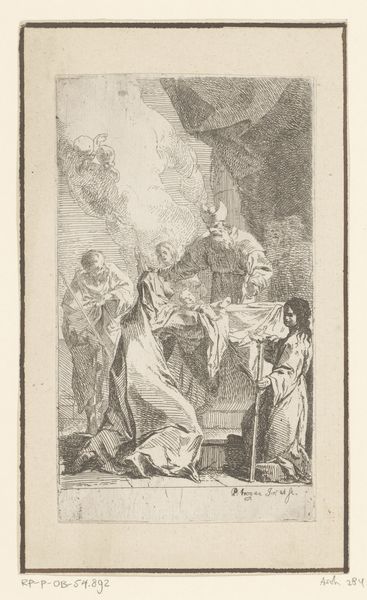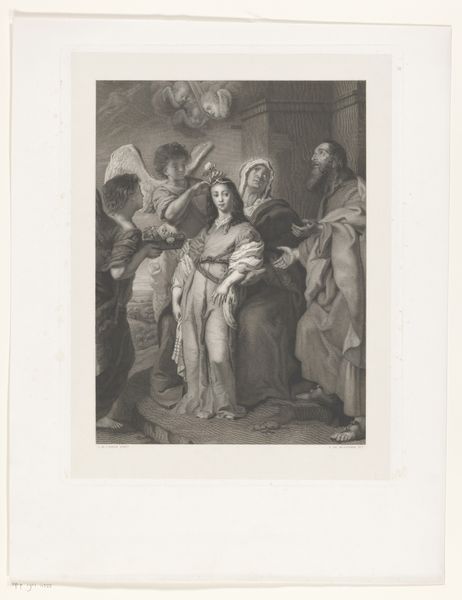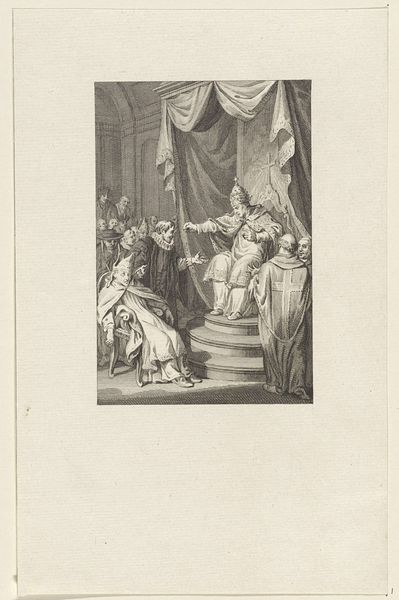
print, paper, engraving
#
neoclacissism
#
allegory
# print
#
old engraving style
#
figuration
#
paper
#
old-timey
#
history-painting
#
academic-art
#
engraving
Dimensions: height 474 mm, width 356 mm
Copyright: Rijks Museum: Open Domain
Curator: Right in front of us, we have "Vestaalse maagden bij een altaar voor godin Vesta," or "Vestal Virgins at an Altar for the Goddess Vesta," by Pieter Hendrik Jonxis, made in 1784. It’s an engraving. What’s your first impression? Editor: The air is so still, despite that flickering fire. It's like a performance—carefully staged, a solemn ceremony. The grayscale adds to that sense of historical distance, doesn’t it? Like looking into a perfectly preserved memory. Curator: It’s steeped in Neoclassicism, with its interest in virtue, civic duty, and a purified return to the aesthetics of ancient Greece and Rome. Jonxis, following an original painting by J. Raoux, illustrates the vestal virgins tending the sacred fire of Vesta. The eternal flame symbolized the protection of Rome. Editor: Exactly, the fire is central! Notice how it's also the focal point around which everything turns, pulling my eye deeper into the piece. And Vesta herself, immortalized as a statue. These women held an immense amount of power, right? I'm always fascinated by how societies grant or deny agency. Curator: Absolutely. These women weren't just priestesses, they were political symbols. The flame, their chastity… all metaphors for the health and prosperity of the state. But there's also a deep sense of constraint, isn't there? That weight of responsibility almost palpable in their faces. Editor: You feel it in the very symmetry, that very rigid order of the piece—reflecting societal expectations but the women also carry their individual sense of style in how they wear their clothing. Even the draping of fabric feels both formal and free. Are they free, are they captive, a fascinating dance. Curator: The engraving technique is fascinating too. Jonxis uses hatching and cross-hatching to create volume and shadow, but it also reinforces the emotional temperature. It creates the illusion of depth that draws you closer to the figures. It also flattens other dimensions like a stage setting. Editor: In the end, this image, while being a reflection of classical ideals, also functions as an enduring exploration of societal expectation and women's roles throughout history. What's gained and what's sacrificed? Curator: Absolutely. And perhaps what continues to smolder beneath the surface, a quiet challenge to that seemingly perfect order.
Comments
No comments
Be the first to comment and join the conversation on the ultimate creative platform.
